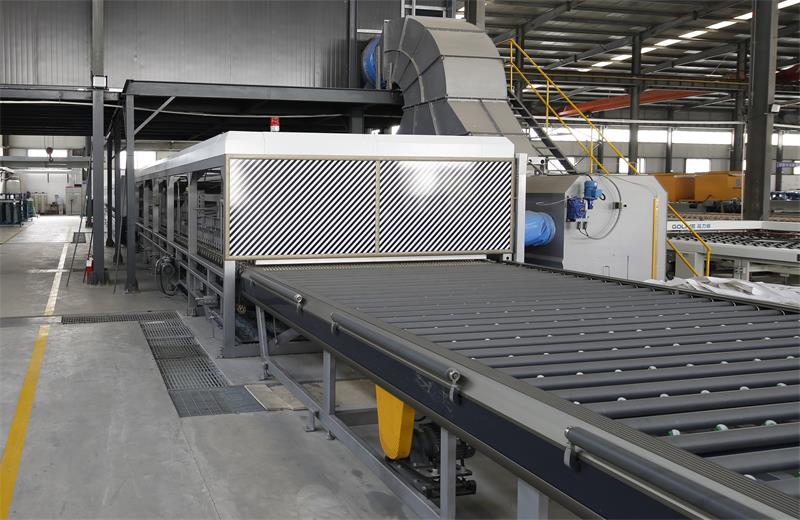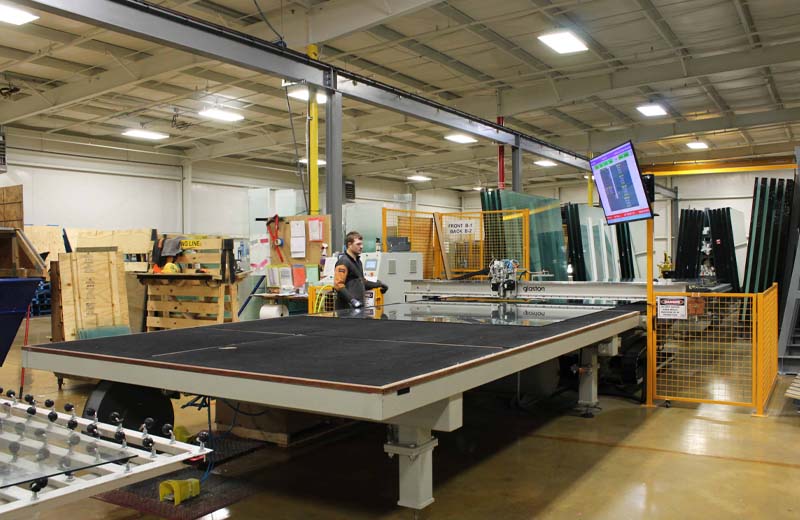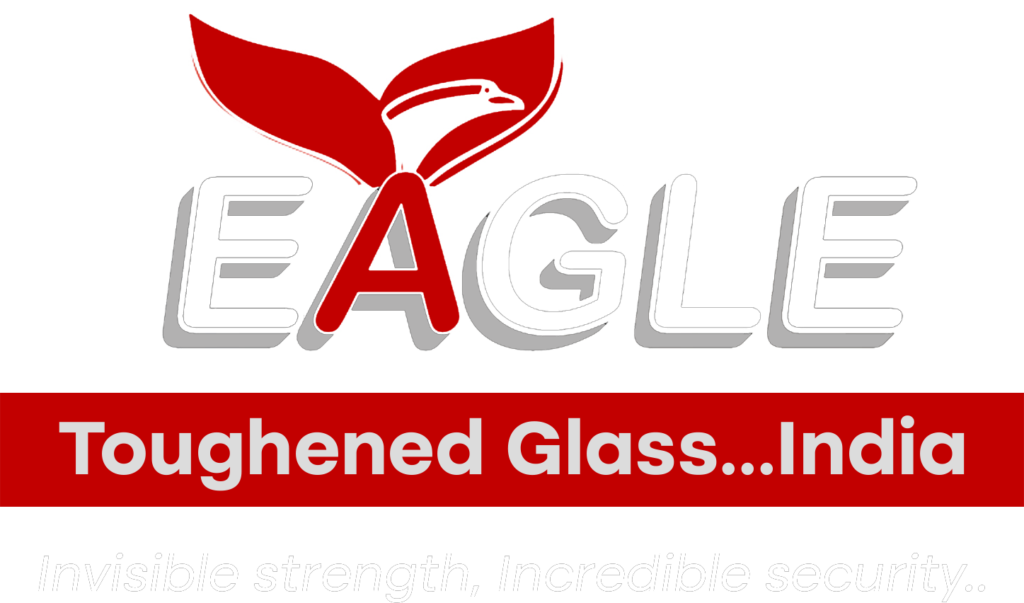Toughened or tempered glass is a type of safety glass processed by controlled thermal or chemical treatments to increase its strength compared with normal glass. Tempering puts the outer surfaces into compression and the interior into tension. Such stresses cause the glass, when broken, to crumble into small granular chunks instead of splintering into jagged shards as plate glass (a.k.a. annealed glass) does. The granular chunks are less likely to cause injury.


Toughened glass is physically and thermally stronger than normal glass. The greater contraction of the inner layer during manufacturing induces compressive stresses in the surface of the glass balanced by tensile stresses in the body of the glass. For glass to be considered toughened, this compressive stress on the surface of the glass should be a minimum of 69 megapascals (10,000 psi). For it to be considered safety glass, the surface compressive stress should exceed 100 megapascals (15,000 psi). The greater the surface stress, the smaller the glass particles will be when broken.
It is this compressive stress that gives the toughened glass increased strength. This is because annealed glass, which has almost no internal stress, usually forms microscopic surface cracks, and any applied tension gets magnified at the surface, reducing the applied tension needed to propagate the crack. Once it starts propagating, tension gets magnified even more easily, causing it to propagate at the speed of sound in the material.
Any cutting or grinding must be done prior to tempering. Cutting, grinding, and sharp impacts after tempering will cause the glass to fracture.
Toughened glass acquires a degree of strength for excess of the strength of normal glass sheet or plate glass, which if broken shatters into small and comparatively harmless pieces. It is claimed that the resistance to mechanical stock of toughened plate glass is 4 to 5 times more than that of ordinary plate glass. A toughened glass has better resistance to the vibration, mechanical shock and abrasion.
Because of the strength and other specific physical properties mentioned above, it finds applications in the following fields:
Toughened glass is used when strength, thermal resistance, and safety are important considerations. Passenger vehicles, for example, have all three requirements. Since they are stored outdoors, they are subject to constant heating and cooling as well as dramatic temperature changes throughout the year. Moreover, they must withstand small impacts such as from road debris such as stones as well as automobile accidents. Because large, sharp glass shards would present additional and unacceptable danger to passengers, toughened glass is used so that if broken, the pieces are blunt and mostly harmless. The windscreen or windshield is instead made of laminated glass, which will not shatter into pieces when broken while side windows and the rear windshield is typically toughened glass.
Toughened glass is also used in buildings for unframed assemblies (such as frameless glass doors), structurally loaded applications, and any other application that would become dangerous in the event of human impact. Tempered and heat strengthened glass can be three to seven times stronger than annealed glass. Building codes in the United States require tempered or laminated glass in several situations including some skylights, near doorways and stairways, large windows, windows which extend close to floor level, sliding doors, elevators, fire department access panels, and near swimming pools

Elevating Architectural Excellence with Innovative Glass Solutions.
Copyright © 2024 Eagle Technologies, Design & developed by DOTXPERTISE
Click one of our contacts below to chat on WhatsApp
